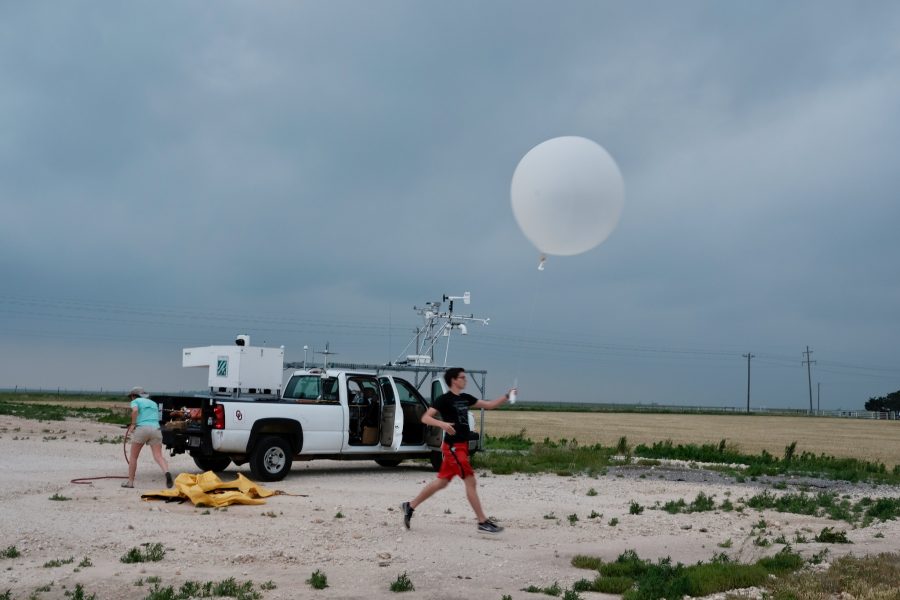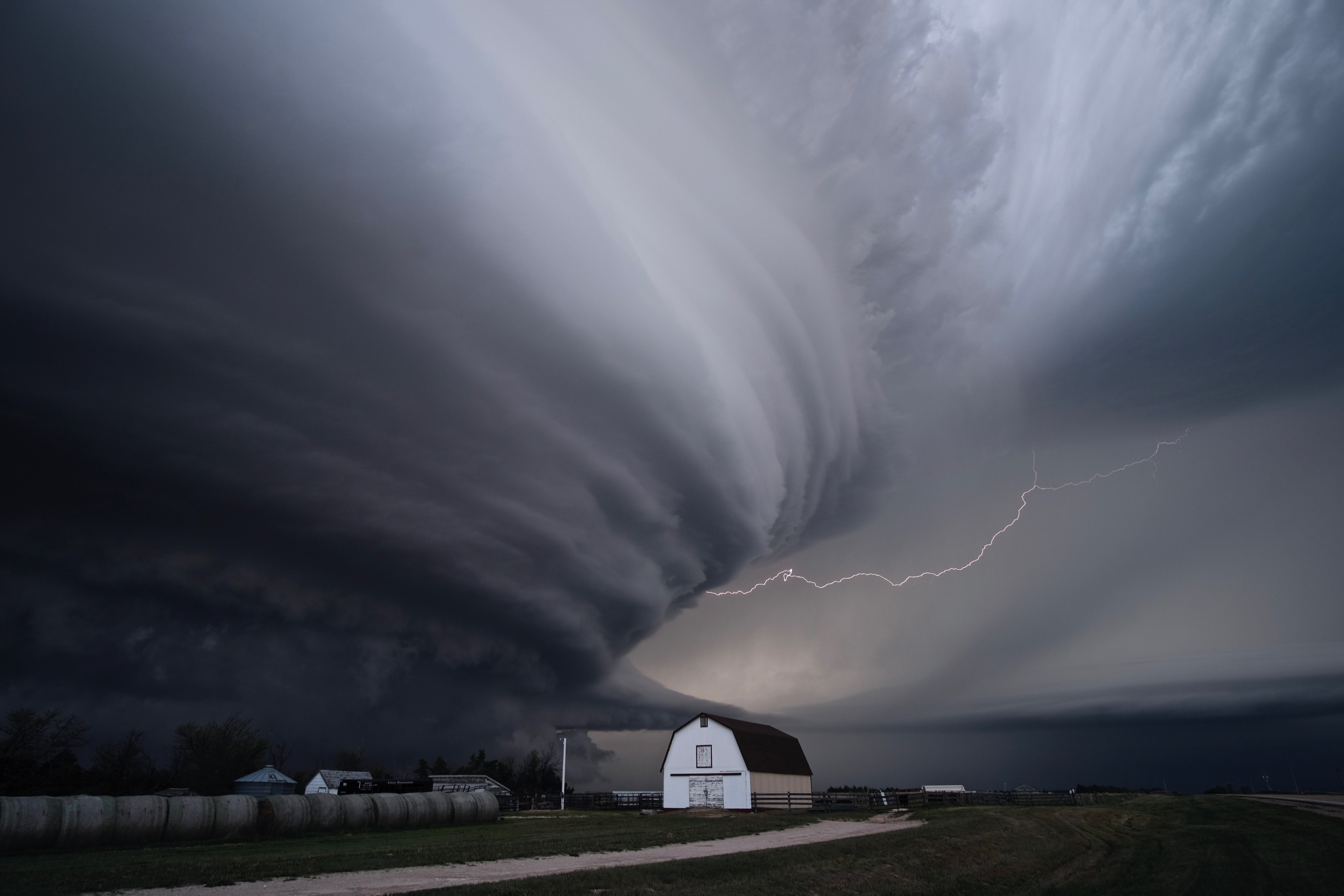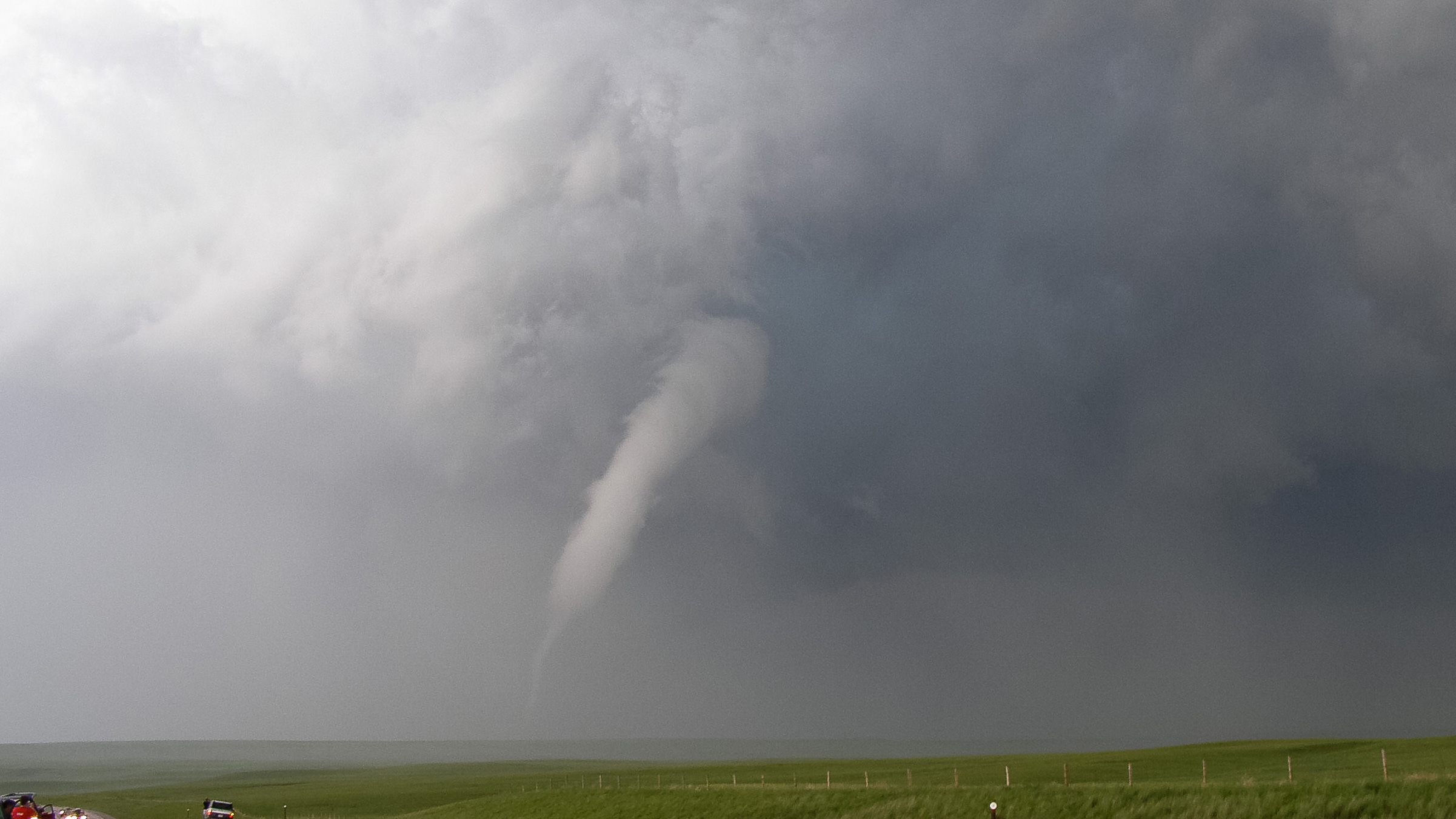Researcher Elizabeth Smith sits in the backseat of a white Chevy pick-up truck surrounded by computer equipment on a windy day in Oklahoma.
Smith works as a University of Oklahoma Cooperative Institute for Mesoscale Meteorological Studies researcher supporting NOAA’s National Severe Storms Laboratory. On this day she’s testing equipment after a recent deployment on TORUS, or Targeted Observation by Radars and UAS of Supercells. The project aims at understanding the relationships between severe thunderstorms and tornado formation.

In the back of the pick-up truck is a LiDAR system, which stands for LIght Detection And Ranging. Unlike radar systems, LiDAR utilizes laser light.
The LiDAR utilizes a 1.5-micron wavelength, just on the edge of visible light.
“The LiDAR fires out laser light to hit particles that are small enough for that specific wavelength,” Smith said. “Those are things you and I can’t easily see, like really, really small dust and aerosol particles.”
The LiDAR team collects observations utilizing the device to track how quickly all the dust, dirt and particles move in the atmosphere.
“If we know how fast those particles move, we can figure out how fast the wind blows,” Smith said. “Understanding the wind field around severe storms and weather is very important for us to improve our understanding and forecasts.”
The LiDAR is one of many instruments utilized in TORUS — a month long project funded by the National Science Foundation and NOAA. The LiDAR is funded by the NOAA NSSL Director’s Discretionary Research Fund to support TORUS.
TORUS includes many instruments, including those on top of trucks known as mobile mesonets, as well as mobile radar trucks and unmanned aircraft vehicles. Mobile mesonets measure atmospheric factors such as wind speed, temperature and humidity at the surface while radar measures storm factors at much higher levels. As a result there is often a gap in coverage, which may be up to several hundred feet above the surface.
“We use the LiDAR and weather balloons with instruments attached to fill that gap,” Smith said. “The LiDAR system is able to provide us with wind information in minutes. There’s a lot about the environment around storms and near storms we don’t understand yet. Understanding the complex flows in that region can be very important.”

Smith said two of the most vital factors the OU CIMMS and NOAA NSSL team are studying to improve forecasting tools are how supercell thunderstorms move and persist.
The team already captured several data sets to review after successful deployments in mid-May, including in Nebraska and Oklahoma.
“We saw interesting turbulence structure in the wind field,” Smith said. “We don’t know what that means just yet, but this is unprecedented data because this specific LiDAR is faster than those used in past field projects.”
Smith said she doesn’t know what the data means, yet, but she does know it is interesting and poses more questions than answers until she can analyze it.
The LiDAR in the Chevy truck, lovingly named Louise, is from the NOAA NSSL CLAMPS-2 trailer utilized during the Verification of the Origins of Rotation in Tornadoes EXperiment-Southeast project during the past few years. The LiDAR was removed from the trailer for increased mobility in extreme environments.


